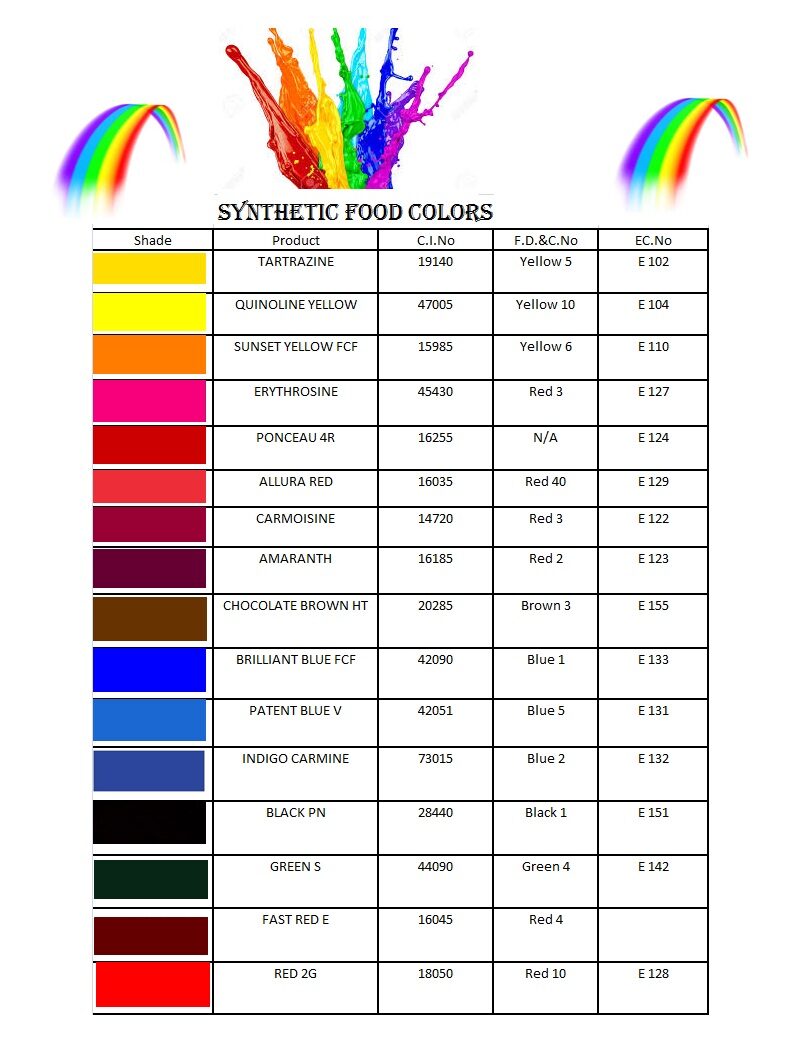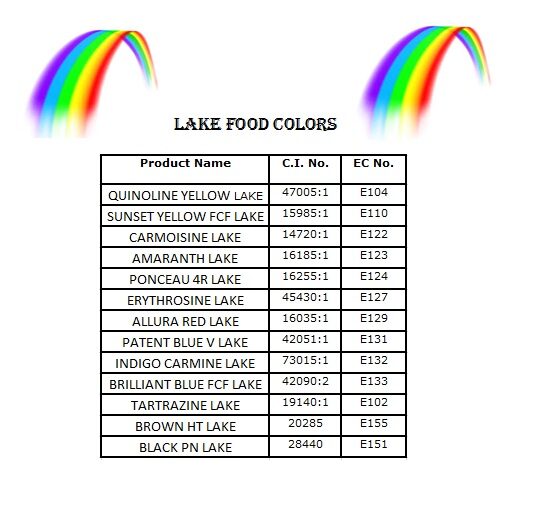Food dyes, also known as food colorings or food additives, are substances used to impart color to food, cosmetics, and drugs. They are commonly added to enhance the visual appeal of products, create distinctive appearances, and compensate for color loss during processing or storage. Food dyes are regulated by government agencies such as the Food and Drug Administration (FDA) in the United States and the European Food Safety Authority (EFSA) in Europe to ensure their safety for consumption and use.
In the food industry, food dyes serve several purposes:
-
Color Enhancement: Food dyes are added to foods and beverages to enhance their appearance and make them more visually appealing. They can be used to create vibrant colors or maintain the natural color of certain foods.
-
Identification and Branding: Food dyes are often used to distinguish between different flavors or varieties of products, helping consumers identify and recognize specific brands or types of food items.
-
Consistency: Food dyes help maintain consistent coloration of processed foods, ensuring uniformity in appearance across batches and throughout the product's shelf life.
-
Masking Off-Colors: Food dyes can be used to mask off-colors that may result from processing, storage, or variations in raw materials, thus improving the overall appearance of the final product.
In the cosmetics industry, food dyes are used primarily for coloring cosmetics and personal care products such as lipsticks, nail polishes, eye shadows, and hair dyes. They allow manufacturers to achieve a wide range of colors and shades to meet consumer preferences and trends.
In the pharmaceutical industry, food dyes are used primarily in the formulation of oral medications, syrups, and topical preparations to add color for identification and aesthetic purposes. They are also used in some medical devices and diagnostic products.
It's important to note that while food dyes are generally considered safe for consumption and use in cosmetics and drugs when used within approved limits, some individuals may be sensitive or allergic to certain dyes. Additionally, regulatory agencies continually evaluate the safety of food dyes, and certain dyes may be restricted or banned if found to pose health risks. Consumers are encouraged to check product labels for information on the use of food dyes and consult with healthcare professionals if they have concerns about their use.



